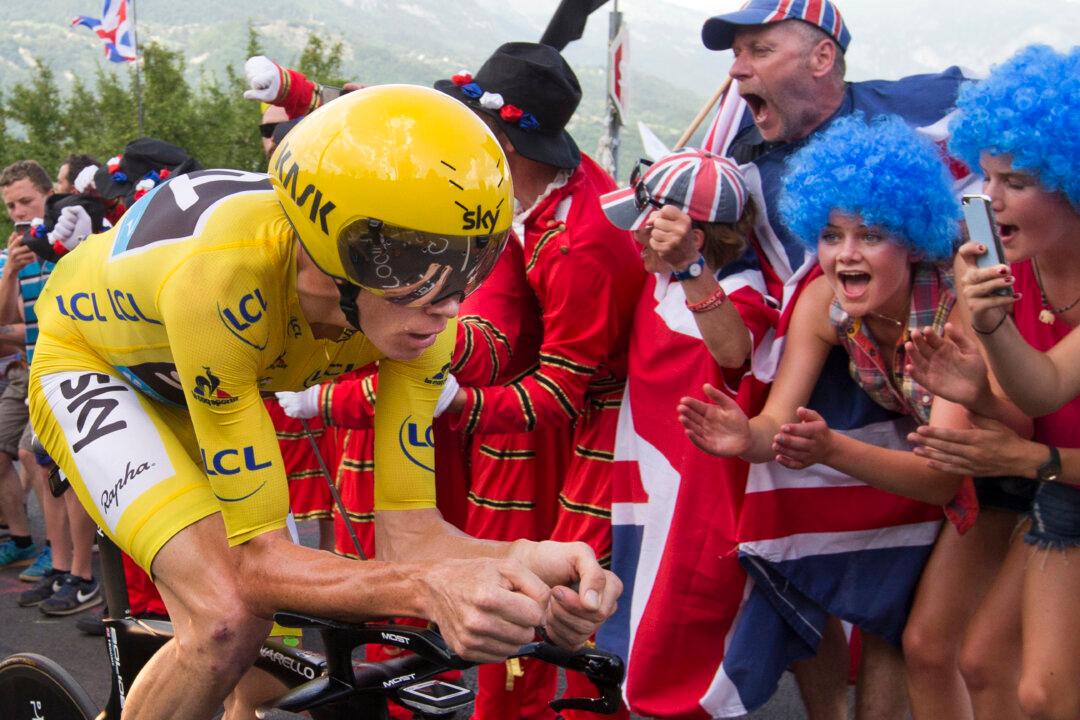Sky’s Chris Froome is apparently not satisfied with simply winning the Tour de France for the third time. Based on the way he has been riding, it seems the 31-year-old Kenyan wants to prove that he is the best at every cycling discipline as well.
Froome demonstrated that he could win by descending in Stage Eight; he showed that he could attack on the flat in Stage Eleven. He proved that he was an unbeatable climber in Stages 12 and 17. Finally, he outpaced some of the sport’s best time trialists while winning Stage 18. About the only aspect of cycling he hasn’t dominated in the 2016 Tour is mountain biking—and one suspects he could excel at that too, if he chose.

Best Young Rider Adam Yates of Orica-BikeExchange, climbs during Stage 18of the Tour de France, Thursday, July 21, 2016. AP Photo/Peter Dejong





